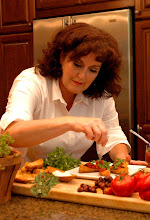 Perhaps one of the greatest national treasures in England is Windsor Castle. The magnificent structure has been in operation for more than 900 years and is one of the Queen's official residences today.
Perhaps one of the greatest national treasures in England is Windsor Castle. The magnificent structure has been in operation for more than 900 years and is one of the Queen's official residences today. 
These walls have seen the passing of the crown through nearly 40 generations of royals. It is the largest working castle in the world, with more than 160 residents. Much of the castle is off limits and business carries on as usual throughout the day, with a cleaning staff of 100+ to keep it pristine.
Unless you are in a helicopter, it is impossible to photograph the vast exterior in a single shot.
Though interior photography is strictly prohibited, with its exquisite art and furnishings, a massive show of weaponry and medieval armor, and raw history in every room, the castle is astonishing. Count on spending at least a full day. The complementary audio tour offers exceptional insight into each room and firsthand interviews with historians, including recollections and explanations on the rebuilding process after the great fire of 1992, as seen in this BBC news shot. The first time we visited England was just after the fire, and I still recall seeing the charred stones and the smell of lingering smoke in the air. Inside now, the castle is flawless. In fact, the fire revealed 14th century stone arches hidden beneath waterlogged woodwork. According to our guide, the archaeological wealth of information obtained during the restoration process was significant and included an previously undocumented well and larders.
We purchased an extra ticket to have a behind-the-scenes tour of the Queen's kitchens, which are only open to the public when state dinners and other functions are not taking place. For a foodie like me, it was fascinating! To the left is a historical perspective on the main kitchen space, with Gothic arches and vaulted ceilings. Ancient Kitchen, Windsor Castle, engraved by William James Bennett 1787-1844 from The History of the Royal Residences by William Henry Pyne 1769-1843 pub. 1818, a painting by James Stephanoff.
 To the right, the kitchen following the restoration post-fire and before decorating. The historical integrity and some of the original timbers were retained while modern amenities were updated, and an improved ceiling ventilation system was cleverly disguised behind custom woodwork. During the restoration, the 30+ chefs and sous chefs asked for additional task lighting to illuminate their work surfaces.
To the right, the kitchen following the restoration post-fire and before decorating. The historical integrity and some of the original timbers were retained while modern amenities were updated, and an improved ceiling ventilation system was cleverly disguised behind custom woodwork. During the restoration, the 30+ chefs and sous chefs asked for additional task lighting to illuminate their work surfaces.The room is now lined with an impressive collection of copper cookware emblazoned with royal insignias and gathered from royal estates throughout the UK. Though the cookware is not used for food prep today, the chefs provide their own preferred equipment for cooking, and still rely on a Victorian-era gas range installed in one of the alcoves. Decorative iron spits sit at both ends of the room. A separate cold kitchen with walk-in refrigerator is adjacent to the main space, and an 18th century wine cellar still in use grounds the staff dining space. An elevator shuttles food up to the state dining rooms from the kitchens. When cooking is underway, the guide staff revealed that the tone in the kitchen is quiet and relaxed.
Good to know: if you purchase your ticket to the castle on site, you can receive a special stamp to allow free re-entry into the castle grounds for up to one year. Take advantage and go back several times. I predict you'll discover something new each time you visit.
www.windsor.gov.uk







No comments:
Post a Comment